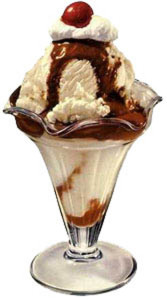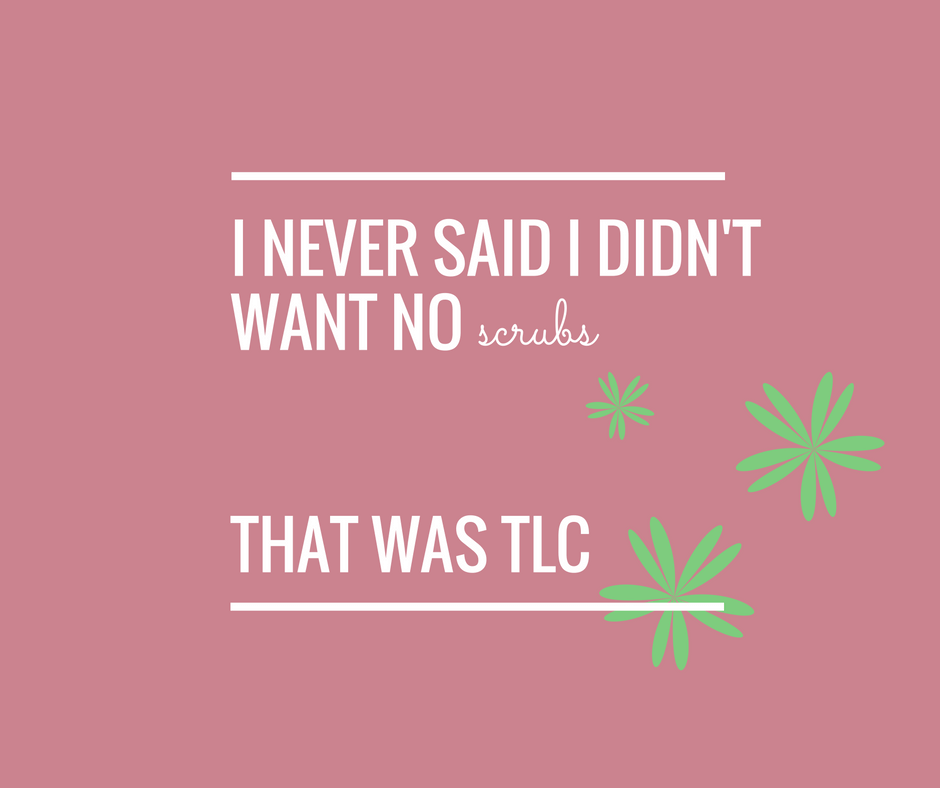Years  ago, ice cream was made simply of eggs, milk, and sugar, and you had to crank it by hand in the old-fashioned ice cream makers. It took so long to make that a scoop or two was an occasional family treat and didn’t do much harm. Today, though, in this age of mass production, synthetics, and substitutes, ice cream is another matter entirely.
ago, ice cream was made simply of eggs, milk, and sugar, and you had to crank it by hand in the old-fashioned ice cream makers. It took so long to make that a scoop or two was an occasional family treat and didn’t do much harm. Today, though, in this age of mass production, synthetics, and substitutes, ice cream is another matter entirely.
The next time you are tempted by a luscious looking sundae, banana split, or ice cream soda, just think of it as a lump of cold, sweetened fat, laced with a mixture of antifreeze, paint remover, leather cleaner, and lice killer, and something tells me that you just may be able to pass it by.
I scream, you scream
I know pointing out what’s really in that scoop of rocky road isn’t going to win me any popularity contests. But by law, ice cream manufacturers are not required to list the additives they use in making ice cream. Consequently, today the majority of ice creams are full of synthetics from start to finish. Laboratory analyses have shown the following ingredients:
- Diethyl glycol: A chemical used as an emulsifier in place of more expensive egg yolk. It is also a chief constituent of antifreeze and paint remover.
- Piperonal: A cheap substitute for vanilla flavour. It is also sold as an insecticide for lice.
- Aldehyde C17: A cheap substitute for cherry flavour. Also flammable liquid used in dyes, plastic, and rubber.
- Ethyl acetate: A substitute for pineapple flavour. Also used as a cleaning solvent for leather and textiles. Its vapor is toxic and can cause chronic lung, liver and heart damage.
- Butyraldehyde: A cheap substitute for nut flavour. It is also a major ingredient of rubber cement.
- Amyl acetate: An inexpensive substitute for banana flavour. Also used as a solvent for an oil plant.
- Sugar: Every scoop of the ice cream has 1/2 cup of the white stuff, which stresses your teeth, your vitamin B supply, and the pancreas (which has to make more insulin to combat all the excessive sugar).
- Fat: The milk fat used in ice cream, which is separated from milk and put into huge vats, is solid enough to walk on. It clogs arteries, fattens muscles, and increases the work-load of your heart and lungs. So, as you can see, ice cream isn’t always the simple, innocent treat you have thought it was. But I won’t tell you to stop eating it altogether. That might be what’s best for your overall health, but it’s also probably pretty unrealistic. So if you don’t want to give up entirely, there are a few things you can do to avoid at least some of the ingredients listed above.
First, be sure to read the labels carefully. Make sure that all the ingredients that are listed are all-natural. The best place to look is your local natural food store. There are also several brands of non-dairy “ice cream” available. These are usually made from rice milk, tofu, and other dairy alternatives. Be careful with these, though: not only are they usually more expensive than “regular” ice cream, but they can also contain the same sorts of additives and other unhealthy ingredients. Again, check the labels carefully.
The only way to be sure that you are not eating anything less than pure in your ice cream (aside from not eating it all, of course) is to make your own, using organic ingredients and all-natural sweeteners like stevia. It’s not as easy as picking up a tub at your corner convenience store, but, thanks to the wonders of electricity and modern ice cream makers, it’s not nearly as difficult as it used to be back in the “old days.” And if you just can’t give up that favourite summer treat, this really is the best way to make it as good for you and your family as possible.
From Dr. Jonathan Wright

